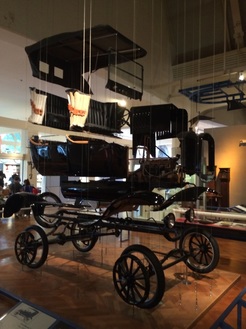|
www.Hexagon-Innovating.com
 "That the automobile has practically reached the limit of its development is suggested by the fact that during the past year no improvements of a radical nature have been introduced." Scientific American, January 2, 1909. (Henry Ford’s Model T moving assembly line came 5 years later). Yesterday, I attended the presentation of Deloitte's 2016 Technology, Media and Telecommunications (TMT) Predictions given by Duncan Stewart. This is an interesting annual event (and report) now in its 15th year. One of the predictions involved autonomous vehicles. What comes to mind are self-driving or driverless cars that can pick you up, drive you to your destination and then go to a remote parking lot awaiting your next command. You wouldn’t even need to be able to drive hence among others, children, the elderly and the blind could benefit. This type of technology is advancing quickly by the likes of Google, Tesla, Apple, Volvo and Daimler. Despite the advances including road tests in California, I for one have been a strong critic of autonomous vehicles. I based this opinion on the obvious issues that must be overcome including perfect operation and self-correction, assigning liability in an accident i.e. driver vs. manufacturer, and ensuring security i.e. the hacking of communication signals. As a result, I quickly dismissed this whole field as “crazy.” (For an excellent review of all the benefits and issues surrounding autonomous vehicles, check out the RAND report.) In thinking about it a bit more and trying to be somewhat more positive, it occurred to me that there might be some early “killer apps” or markets where these issues were less critical thus making the technology viable. While watching a movie on the Diavik Diamond Mine, I thought about the value of having autonomous versions of those huge Haul (Dump) trucks that move the ore from the kimberlite pipes to the surface (1). Standard routes and no real traffic reduce the safety issues; Not requiring drivers that are difficult to attract and expensive to hire saves time and money; and There are no nearby hackers! Duncan Stewart outlined a second and now obvious “killer app” that I had never considered as a result of my quick-to-judge bias. In his presentation, he stated that the costs of getting Level 4, or full autonomous/driverless vehicles to market will be high. Not just further technology development, but all the regulatory testing, infrastructure improvements, standardization efforts and failsafe systems will be required. Although it will happen someday, it will be quite far off in the future perhaps 2040! But of course, he went on to say, that many aspects of this technology are already in use in the aircraft industry with autopilots, automatic navigation and landing etc. In addition, Duncan explained that much of the autonomous vehicle technology being developed can be applied immediately under less-stringent Level 1, 2 and 3 situations. These are the so called function-specific automation, combined-function automation and limited self-driving automation respectively. Examples of Level 1 automation are already in widespread use and include anti-lock braking systems (ABS) and cruise control. Some Level 2 automation is becoming available including adaptive cruise control with lane centering, as well as automated speed adjustment and braking to maintain a safe vehicle spacing. Level 3 automation, which may only be a few years away, incorporates self-steering and speed control as well as the ability to negotiate hazards and change lanes, while allowing the driver to override it at any time. These insights have now led me to see autonomous vehicles, the technology underpinning them, and the investment opportunities in a new and far more positive light. Clearly my biases and quick judgement impaired my ability to look at all of the technical aspects and commercial potential associated with controlling vehicles and making them safer. It is critically important when developing a product or service, that you consider as many routes to market as possible, so that the potential early winners are pursued alongside the potential big winners. Employing some of the creative thinking techniques can assist, such as the List of 100 (listing 100 routes to market for a particular opportunity), or SCAMPER (this acronym stands for Substitute, Combine, Adapt, Modify, Put To Other Uses, Eliminate and Reverse which encourages thinking “outside-the-box”). Examples of dismissing opportunities offhand are everywhere. The irony of many statements made in the past by famous CEOs, entrepreneurs and experts, like the opening quotation, provides supporting evidence. So before dismissing any idea as “crazy" especially one in which others are investing heavily, take a moment to reflect and ask yourself: “In what ways, applications or markets could these technologies be applied alone or in combination with others, that could provide significant benefits and value to particular sets of customers in both the short as well as the longer term?” This will reveal potential opportunities and hopefully some that are worth of pursuing immediately (2). Additionally, one should never underestimate the rate of technology advancement; Perhaps Level 4 autonomous vehicles will be here in drive me around in my old age! (1) These trucks, like the Komatsu 830E, carry 231 metric tons = 140 crushed cars, or up to 147 cubic meters = 3.5 full swimming pools (2) In a related manner, embarking on or participating in grand projects, like putting a man on the moon, building out the internet and sequencing the human genome, are worthwhile as they are sure to generate numerous valuable spin-offs.
0 Comments
Leave a Reply. |
AuthorDuncan Jones Archives
May 2022
Categories |

 RSS Feed
RSS Feed